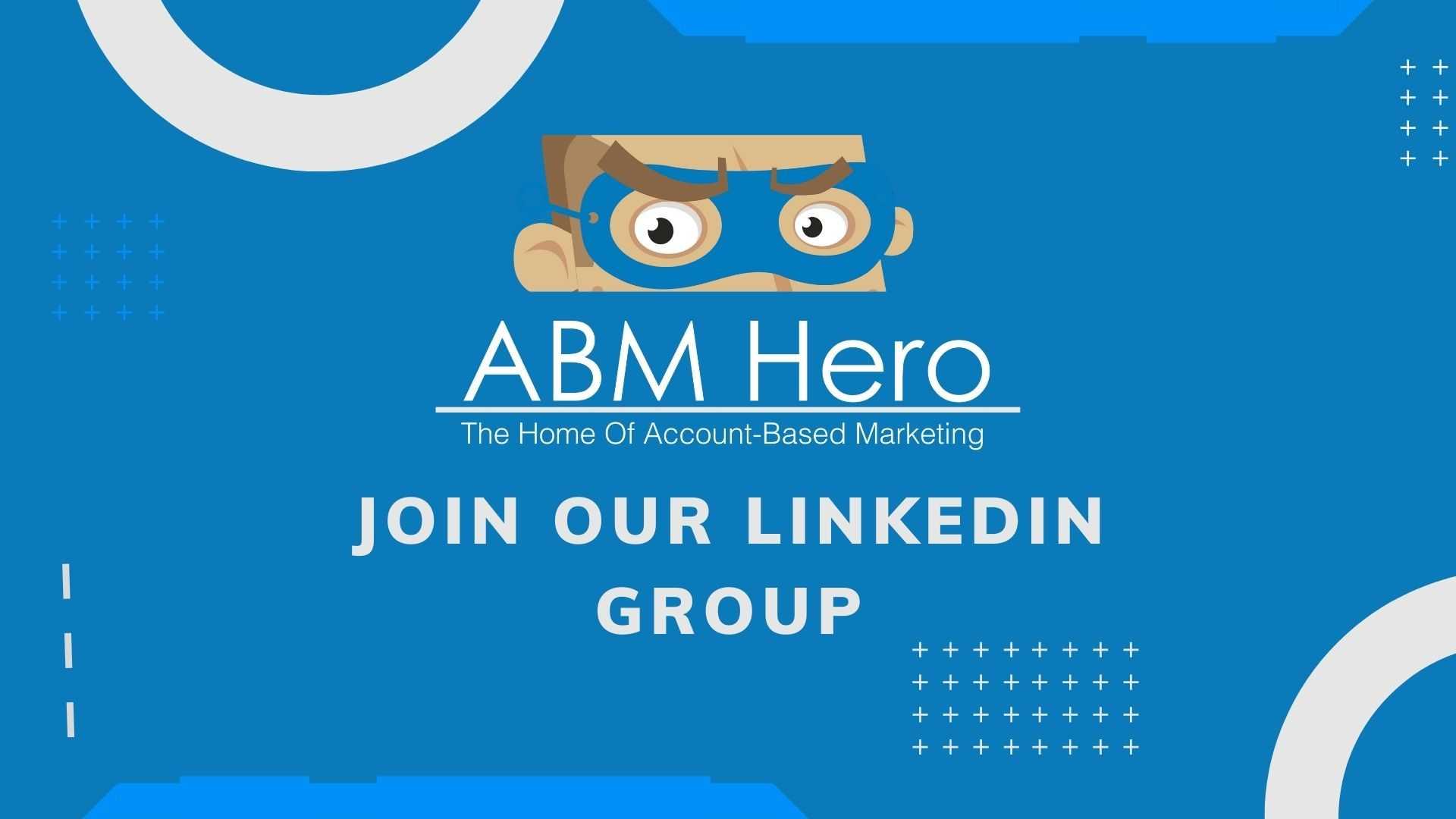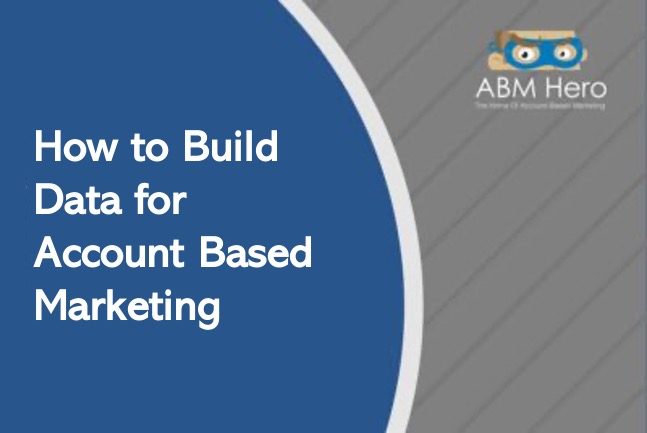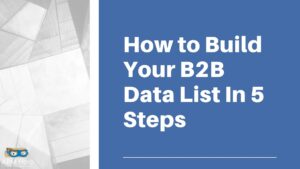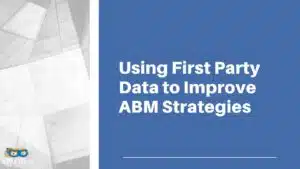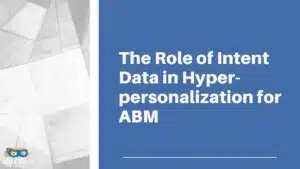Over recent years there has been a lot of buzz around an alternative marketing strategy for B2B companies known as account-based marketing. What is it and how does it work? In a nutshell account based marketing means that the usual funnelling method for attaining target companies as the last step in your marketing strategy has (quite literally) been tipped on its head. It takes on a personalised way of working, and so identifying the right target companies for your business becomes the first crucial step. But where do you start? To do this successfully first you must understand your market and know how to build accurate, reliable data.
This can be broken down into the following steps:
-
Determine your goal.
What are you trying to achieve? Sales, increased engagement, brand/product awareness, all of the above?
-
Define your target account market.
Using customer prospect data (CPD), customer relationship management (CRM) and forming an ideal customer profile (ICP) will help with this.
-
Align sales and marketing teams.
Sales and marketing stakeholders need to be working closely together when implementing a marketing strategy. Set out a plan with predicted outcomes so this can be reviewed and adjusted later.
-
Collect various data.
This includes but isn’t limited to technographics, firmographics, intent/engagement data and personal data.
-
Find trusted sources for this data.
This information can be sourced in-house however you may find there are gaps in your data. This is where third-party organisations can be greatly beneficial, though check that they are well-informed.
-
Measure, adjust, test, repeat.
Don’t just note the results, learn from them. Make adjustments in your methods where necessary. Did the results meet your expectations? The more engaged the team is the better the outcome.

Yes! If executed well ABM techniques will maximise ROI, save time and resources and ultimately increase the overall effectiveness of your campaign. According to statistics, 85% of marketers who measure ROI describe account-based marketing as delivering higher returns than any other marketing approach.
Understanding Your Market: Discover your opportunities with customer and global prospect data
Using customer and global prospect data you can gather useful information around the behavioural patterns of potential new customers, which not only provides a starting point for how to build data for account-based marketing, it also informs your next steps in engaging with said potential customers; from knowing when to make that initial contact, to determining whether they are even the right client for you.
Take the coronavirus pandemic into account, since 2020 we have been forced to alter the way we operate. Remote working, changes in company size, fluctuating buying and selling patterns etc. are important global prospects that significantly affect your target accounts, CRMs and subsequently the way you carry out campaigns.
There are numerous ways that you can obtain this data from using third party organisations to the data you already use. What’s most important is that the data you collect is accurate and reliable, without these factors your ABM campaign will suffer. Dependable data allows you to hone in on the right leads for your business from the get-go. The time you save on reaching out to prospects that are less likely to buy, can be reinvested into developing a tactful, stand-out campaign that will impress your customer.
Monitoring all the various data you collect will provide an accurate indication of your potential customers digital footprint. From here you can identify the gaps in their needs and fill them with what you have to offer.
How to Create an Ideal Customer Profile (ICP)
ICPs helps you identify the kind of customer you want and the kind of customer that wants to buy from you, this is your ‘ideal’ customer. Creating a profile for them helps you source your best prospects, forming a Dream 100. (The dream 100 refers to campaigning to a list of your 100 dream clients.)
ICPs are filled with descriptive data that details the company you want to sell to, not the individual buyer or end user. Data that focuses on the buyers habits is a buyer persona (these are more useful for acquiring leads). ICPs should focus on relevant characteristics for your target accounts, such as:
- Annual revenue
- B2B or B2C (are they business-to-business operated or business-to-consumer?)
- Budget (what is their purchasing budget?)
- Business intelligence (how developed is the business?)
- Customer base size
- Employee headcount
- Geography (where is the company based?)
- Industry (what industry are they in?)
- Technical maturity
- Technology used (what is the list of tech they use?)
All these factors produce good insight into target account behaviour, though you may not need all of them. Determine which are the most important and relevant to your team. Collecting too much and/or irrelevant data can be detrimental to the success of your campaign.
This is why it is essential to ensure both the marketing and sales team coordinate on this process, collectively everyone should be in agreement at each stage of the campaign. In this way sales and marketing need to be in alignment with target audiences, strategy and execution of this strategy. Forrester Research found that organisations with aligned sales and marketing teams see an average of 32% annual revenue growth, while less aligned companies see a 7% decline in growth. As a B2B marketer, you don’t want the lack of this to cost you later.
How to use the data in your CRM to create an ICP
Customer relationship management consists of data split into around 4 main categories:
-
Identity data i.e:
– First and last name
– Mailing information (physical address)
– Email address and telephone number
– Social media profiles (including links to their accounts)
– Relevant personal information (DOB, accounts related to product etc.) -
Descriptive data
Lifestyle details for a clearer idea on who the customer is on a personal level (for example their career and education, lifestyle/interests, and family details)
-
Quantitative data
Measurable data to see how your contact has interacted with your company:
– What is their average order value?
– How often do they visit your website?
– Service ticket field
– How often do they engage with your social media channels? -
Qualitative data
This refers to the customers attitudes, motivations and behaviours that contribute towards their buying decisions:
– Can be acquired through surveys, feedback forms etc.
These stats alone can quickly fill out a good amount of your ICP. For instance, identity/descriptive data can tell us where the company is based or what industry the customer is in whilst quantitative and qualitative data can give insight into average budget and technical maturity.
How to build data for ABM
In building ABM data it’s evident that understanding your market works conjunctively with data building, in that one cannot exist without the other. Both however depend on what can be categorised into three main components; firmographics, demographics and technographics – formulated into what Tony Zambito describes as the Three Pillars of Account-Based Marketing.

Firmographics refer to the company profile that details information such as industry, geography, company/department headcount etc. This type of data forms the basis of your ICP and is generally how web analytics generate data.
Demographics refers to information about the decision maker/buyer at a company, this allows you to understand how the company makes purchasing decisions. From here you have an informed approach to deliver your campaign directly catered to their business. A known use for this type of information is intent data:
Intent data is a useful infographic which displays an individuals interests by observing their online behaviours/habits, this then tells us what they are most likely to do next. You can use this data to follow the customers buyer journey from what product they want, to where they find the desired product, to who they make their final buying decision with.
e.g. LeadFeeder operate a B2B website tracking software which shows you what companies are visiting your site, how they found you and what their interests are.
Technographics refer to the technology that the company uses. This information could also be used to update ICP data. For example, if your product is an IT plug-in and your goal is to sell your product to companies that use certain tech compatible with your plug-in, using technographics can quickly identify your ideal customer.
Organisations such as Bombora provide services that utilise all three pillars, including intent data; an ideal source for B2B businesses wanting to know how to build ABM data or businesses that need deeper insight into their dream prospects.
How to build data with a CDP
A customer data profile is a platform filled with software that holds all your customer data together in one place. It unifies your first party data such as CRM and email systems (even your third party data) to create a widespread customer database, making it easier to utilise/monitor your data.
It acts as an all-access database which can be activated with your own multi-channel marketing and advertisement channels. One means of doing this is through segregation – the process of dividing your B2B prospect market into sub-group categories based on shared characteristics. i.e most profitable/least profitable etc.
Data is sent back to your CDP where it updates user’s profiles once channels have been interacted with. The more users interact with your channels, the more in-depth your data becomes, resulting in more accurate user profiles and optimised B2B marketing roll-out.
CDPs do not replace web analytics or data management platforms, instead it works with them to enhance your CDP data. As we know ABM is dependant on a variety of data accumulated from what can feel like an endless number of different tools and systems, which typically are not designed to share information with each other. CDPs solve this problem by connecting all your tools in one place, sharing one unique identifier across each. Unsure of where to go? Endole, Zoominfo and Cognism are a few examples of top trusted full-data service providers.
Using LinkedIn and Sales Navigator for reliable data
Amongst all this data collection, it’s vital to filter out any unnecessary information and/or potential customer profiles that are no longer relevant to your ICP. LinkedIn’s new web analytic LinkedIn Sales Navigator is a data refinement tool that helps you target the right accounts through providing clearer visibility into the size and fast changing nature of accounts, resulting in more tangible data.
It works with CDPs and global prospect data that reflects alternative ways of working (such as surges in remote working following the pandemic) to give you a clear and up to date view of your market.
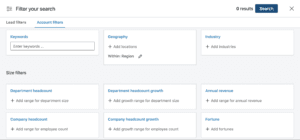
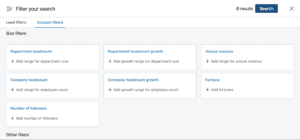
Refining data in this way leaves you with accounts that have the highest potential to drive revenue, giving the sales team an educated estimate of where the strongest relationships lie.
Data Enrichment
Data enrichment is the process of refining and enhancing raw data presented in the form of a developed insight tool that improves the quality of your data value using firmographics. It serves as a key function in CDPs as this is what keeps them up to date in real time with unique data points.
Data enrichment shouldn’t be confused with data cleansing. Data cleansing identifies inaccuracies and redundancies so that the data can be appended or enriched. In this way they work hand-in-hand with each other as cleansing prepares data for enrichment. Below are some exemplar enrichment services and how they operate.
| Data Vendor | Enrichment Service | How it Works |
| Clearbit | Email search | Runs data lookups using a combination of 250+ public and private data sources that are never older than 30 days. |
| FullContact | Email, phone and user search | Provides personal and professional insights linked to billions of online and offline identifiers. |
Playing the long game
Whilst the benefits of account based marketing speaks for itself, you may not reap these benefits on your first attempt. Discovering what works best for your ABM campaign will take some trial and error. Don’t be discouraged if you don’t meet your expectations at first because ABM isn’t a quick fix. It’s about building long term customer relationships with ideal companies that will bring the most value to your business.
For more tips and insights on the ever-evolving world of account based marketing, follow ABM Hero. With ABM Hero you can stay ahead of the competition using the latest news and information. If you’d like to join the conversation and share what you have learnt on your ABM journey, or just see what others have to say, please feel free to join our ABM group below.
